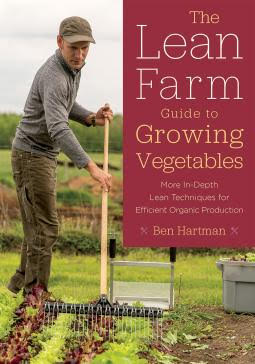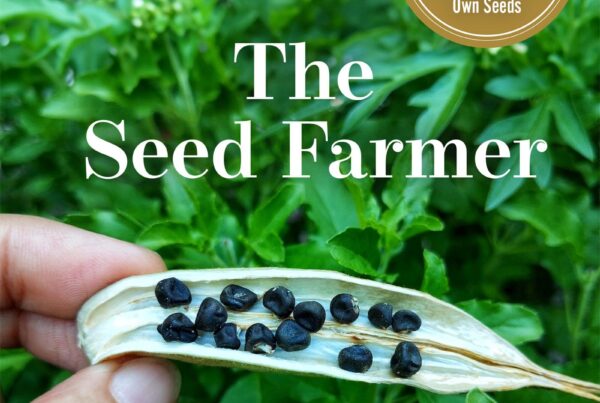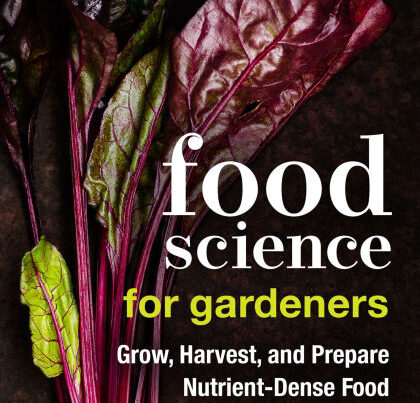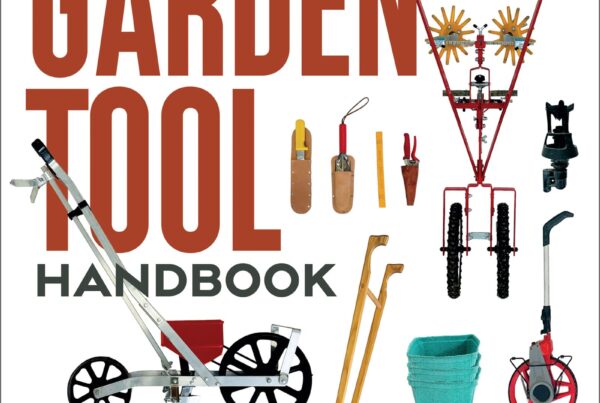 Ben Hartman, Chelsea Green, $29.95, publication November 2017
Ben Hartman, Chelsea Green, $29.95, publication November 2017
When I read Ben Hartman’s first book, The Lean Farm, and wrote my review in October 2015, I was on the path from curious and enthusiastic sceptic to enthusiastic-fan-with-reservations. Â I rejoiced in the ideas of reducing wasted effort, being more efficient, more successful at producing food, happier, and less stressed. Ben Hartman, Jean-Martin Fortier, and Curtis Stone are three successful commercial vegetable growers who clarified for me that a small-scale farm could be more efficient, more sustainable, and certainly more pleasant if worked mostly with manual tools and a walk-behind tractor (rototiller) than with a cultivating ride-on tractor, which was the direction I had been looking in. Â We really didn’t want to be spending our time on a tractor, or under it, maintaining it. Â We didn’t want a class of tractor-driving gardeners divided from a class of hands-in-the-soil gardeners. Â Nor did we want to re-format our gardens and give up all the space to allow a tractor to turn around.
When I heard about Ben’s new book, which he describes as “a how-to manual, with a lean twist,” I sought it out.  Here are the many helpful details to improve how we do our vegetable growing.  His introduction reviews the five core Lean Principles, so if you haven’t read his first book first, you can still understand the thinking behind his systems.  With Ben’s first book, I expected push-back from crew members who would judge his ideas and techniques as inflexible, too detailed, and nit-picky.  Was this just my projection?  I found it very thought-provoking, and I was constantly assessing our farm as I read it.  I had a rough triage of inner comments: “ah, we already do that (well)â€Â ̶ “oh we really need to do that†  ̶ “oooh, I’m not happy with that idea.â€
By and large I valued the actual techniques and strategies. Â I bristled against his classifying of planning, organizing, and other managerial tasks, as well as bed prep, hoeing, weeding, and thinning seedlings, as Type 1 waste (muda, in Japanese). Â That just didn’t sit right with me. Â Perhaps it’s a word that doesn’t translate well. Â A commenter on my blog clarified this for me. Â She likened Type 1 waste to Stephen Covey’s Quadrant 2 (Important but Not Urgent) in the Seven Habits of Highly Effective People. Â Quadrant 2 includes maintenance, advance planning, and being prepared. Â Preventing problems, or dealing with them to minimize their impact, is important. Â I could never call it wasteful. Â In fact, I see attention to Quadrant 2 as a sign of good leadership and good farming. Â We need to make time for the important tasks that are not yet urgent. Â For example, scout for pests and don’t ignore them till they overwhelm your crops.
In this second book there is acknowledgement that while muda is usually translated as waste, not all muda should be completely eliminated. Â Simply minimize the time and energy given to non-value-adding activities. Â OK, I can go with that. Â In fact, the list of 10 forms of muda doesn’t say a word about managerial activities. Â Or about reading books, or writing reviews!
Ben takes a Lean look at crop planning, bed prep, compost-making, seed starting, transplanting, the Japanese paper pot transplanter, direct seeding, weed and pest control, sales, seven crop case studies, greenhouses, and finding good land and building a farm. Â There are valuable appendices with recommendations on tools, crop varieties, dollar-value-per-bed, a photo gallery of seven more crops, a Japanese glossary, and a book list.
I’m a fan of careful crop planning, and I acknowledge that doing it efficiently is important. Â There is definitely such a thing as “over-planning.” Â I think experience teaches us what we need planned and what we don’t. Â When the same people grow the same crops on the same farm year after year, lots can be taken as decided. Â When we have built fertile soil and there are no new plagues, we can get away with minimal crop rotation. Â At Clay Bottom Farm (in Indiana), Ben, Rachel and their crew are earning their living from less than one acre, growing and selling specialty produce to restaurants, farmers markets, and through their CSA. Â They grow a lot of salad greens and tomatoes, along with some root crops, peppers, eggplants, zucchini, and cucumbers. Â Sweet corn, beans, peas, and winter storage crops don’t feature much or at all. Â They have found the crop mix that works for their customers (that is one of the 5 Lean Principles). Â The situation in our gardens seems more complicated, but the point remains: streamline the planning, don’t over-work it.
The concept of load-levelling (heijunka) is valuable – look at the plan for the year and keep it manageable every month.  Also, plan in a vacation for everyone.  We try to stagger our vacations (i.e., taking turns) so that there are always a few people who can run things.  We tried reducing the August workload, moving one big task to September, and taking a few weeks off from lettuce production.  Ending our watermelon harvests at the end of August and our winter squash at the end of September were helpful in keeping fall work manageable.  We’ve got better at “doing-in” plantings of beans, cucumbers, and summer squash if they are getting to be oppressive.
I was particularly excited to see instructions to build a seed germination cabinet à la Hartman.  Like Ben, we use discarded refrigerators.  Ours rely on incandescent light bulbs, which are a dwindling “resource.”  Some would say “good riddance” but we are actually using the heat the bulbs generate, as well as the light.  Ben’s clever design uses a pan of water heated by an electric element, on a thermostat.  This could be our next germinator!
I’ve read about the Japanese paper pot transplanter before, and concluded it’s best for plants set out at 6″ spacing or less, and fairly large plantings of one thing.  I’m intrigued – would love to try it, even though we do more direct sowing of close-planted crops than Ben does.  I love the idea of a carefully-designed manual machine for transplanting, especially as my knees get older, and like squatting less.  This chapter is worth the price of the book to anyone about to buy the transplanter.  So many tips, including Ben’s Paper Pot Cheat Sheet.  The direct-seeding chapter explains the Jang JP-1 seeder, and the same message applies about buying the book if you’re buying the seeder.
Weeds and pest control without muda – Yes, of course, focus on prevention, rather than managing.  Ben gives 5 Steps to No Weeds. Yes, time saved there would pay for the price of the book too!  Pests, Leaned Up is about Biological IPM: rowcovers, beneficial insects and biological sprays if needed.
The sales chapter looks at transportation logistics and sensible delivery vehicles. Â As Ben says, “Big vehicles, we learned, don’t by themselves lead to large sales.” Â Avoid over-production. Â Set up your market booth for smooth flow.
The case studies explore how Clay Bottom farmers decide which varieties to grow, where and when, and of course, how much. Â The case study crops are tomatoes, baby greens, kale, head lettuce and romaine, carrots, other bunched roots, and peppers. Â Here’s good information from someone who has paid exquisitely good attention to what works and what doesn’t.
The chapters on finding good land and setting up your farm in a well-organized, Lean way will save new farmers some costly (livelihood-threatening) mistakes, and help the rest of us think twice about why we store our tools where we do, and so on. Â The greenhouse chapter is brief, and yet full of gems about design.







